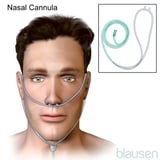how to become a medical examiner
A doctor first asks the person about symptoms. Chest tightness or pain, shortness of breath (dyspnea Shortness of Breath Shortness of breath—what doctors call dyspnea—is the unpleasant sensation of having difficulty breathing. People experience and describe shortness of breath differently depending on the cause... read more  ) either at rest or during exertion, cough, coughing up of sputum or blood Coughing Up Blood Coughing up blood from the respiratory tract is called hemoptysis. The amount of blood produced can vary from a few streaks of blood mixed with normal sputum to large amounts of pure blood.... read more (hemoptysis), and wheezing Wheezing Wheezing is a high-pitched, whistling sound that occurs during breathing when the airways are partially blocked. (See also Wheezing in Infants and Young Children.) Wheezing results from a narrowing... read more may indicate a lung or airway disorder. More general symptoms, such as fever, weakness, fatigue, or a general feeling of illness or discomfort (malaise), sometimes also reflect a lung or airway disorder.
) either at rest or during exertion, cough, coughing up of sputum or blood Coughing Up Blood Coughing up blood from the respiratory tract is called hemoptysis. The amount of blood produced can vary from a few streaks of blood mixed with normal sputum to large amounts of pure blood.... read more (hemoptysis), and wheezing Wheezing Wheezing is a high-pitched, whistling sound that occurs during breathing when the airways are partially blocked. (See also Wheezing in Infants and Young Children.) Wheezing results from a narrowing... read more may indicate a lung or airway disorder. More general symptoms, such as fever, weakness, fatigue, or a general feeling of illness or discomfort (malaise), sometimes also reflect a lung or airway disorder.
Next, the doctor asks the person about
-
Past lung disorders and infections
-
Other current and previous medical problems and treatments
-
Previous exposure to chemicals, dusts, molds, or animals
-
Use of drugs, alcohol, and tobacco
-
Home and work environments
-
Travels
-
Recreational activities
A doctor asks whether family members have had lung or airway disorders or any other disorders that may affect the lungs or airways (such as clotting and generalized inflammatory disorders). The doctor also asks about other common symptoms and other medical disorders, even those that do not seem related to the respiratory system.
A doctor observes the chest to determine if the breathing rate and movements are normal. Using a stethoscope, a doctor listens to the breath sounds to determine whether airflow is normal or obstructed, whether the lungs contain fluid, or whether there are any abnormal lung sounds. By tapping (percussing) the chest and/or by feeling how vibrations resulting from speaking are transmitted to the chest wall, a doctor can often determine if the lungs are filled with air or collapsed and if the space around the lungs contains fluid.
Click here for the Professional Version

© 2021 Merck Sharp & Dohme Corp., a subsidiary of Merck & Co., Inc., Kenilworth, NJ, USA
Was This Page Helpful?
how to become a medical examiner
Source: https://www.merckmanuals.com/home/lung-and-airway-disorders/diagnosis-of-lung-disorders/medical-history-and-physical-examination-for-lung-disorders
Posted by: laplantwilesire1983.blogspot.com

0 Response to "how to become a medical examiner"
Post a Comment